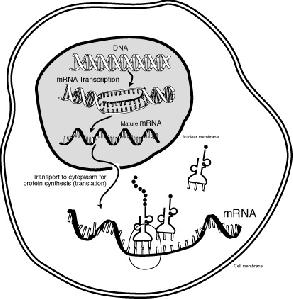Your detective is called because a body has been found dumped in a remote area. The victim is identified as a man who has been missing for four months and the medical examiner determines that his death likely occurred around the time of his disappearance. He had been in a dispute with a business partner over ownership of their company. The business partner has always maintained that the victim sold out and moved away to parts unknown. A fishy story but your detective has little to go on.
The search warrant is executed on the business partner’s home and indeed an old bloodstain is found on the garage floor. Blood typing and DNA analysis proves that it is the victim’s blood but the partner says it was from two years earlier when the victim helped him move some furniture and injured his hand, bleeding on the floor. He said they both cleaned it up at that time but he must’ve missed a spot.
The dilemma facing your detective is how to determine when the blood was shed? Four months ago or two years ago? DNA will only tell him that the blood belongs to the victim but it will not tell him when it was deposited.
Enter Messenger Ribonucleic Acid (Messenger RNA or mRNA).
Our DNA is our instruction manual. It tells each cell of the body what to do and how to do it. But DNA is inert. It does nothing except hold information. The real work is done by the enzymes in the cytoplasm of the cell. They create new proteins, other enzymes, various chemicals, and all the other things required for life.

But how does the DNA pass its instructions out to the cytoplasm where the needed worker enzymes are created and ply their trade? By employing mRNA, a temporary molecule, that is synthesized within the nucleus according to the instructions coded within the DNA. The mRNA then migrates into the cell’s cytoplasm where it directs the creation of the enzymes needed to do the job. In effect it carries the DNA’s instruction to the workplace. That’s why it’s called messenger RNA. This is of course a simplified explanation of a very complex process.
So what does this have to do with the age of a blood stain? Anne-Marie Simard of the University of Montréal is studying the degradation of four messenger RNA molecules found within blood, saliva, and semen. Her preliminary findings suggest that these molecules degrade at a measurable rate and if this is proven to be true such studies might be useful for determining the age of crime scene samples.
This could be a very useful tool for homicide investigators, particularly in cases such as the fictional one I outlined above. Determining the blood stain was four months old rather than two years would require an explanation from the business partner.
